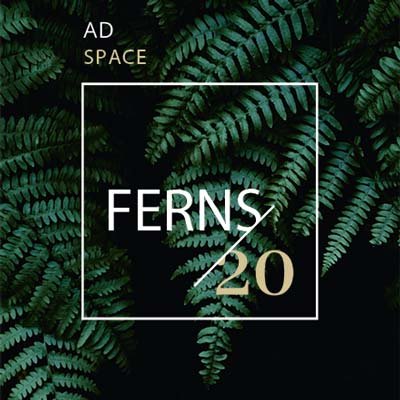In late March 2025, dozens of natural resource professionals from across Tigray gathered in Wukro town for an intensive, three-day “Training of Trainers” on sustainable land management and restoration. Organized by the Center for International Forestry Research and World Agroforestry (CIFOR-ICRAF), the training aimed to strengthen local capacity through its Integrated Climate-Smart Livelihood Improvement Program.
After two days of in-depth classroom learning, participants travelled to the Gergera watershed—a living example of how degraded landscapes can be revived through long-term community stewardship and practical interventions.
On arrival, they explored conservation-based bench terraces running across the steep hillsides—home to newly planted trees and thriving native vegetation. They climbed to the summit to see a gravity-fed rooftop water harvesting reservoir, an experimental low-cost structure designed to irrigate high-value fruit trees and fodder grasses. Holding 72 cubic metres of water, it’s the first of its kind in the region and part of a growing effort to adapt restoration tools to local needs and terrain.
Roadside water harvesting structures, built through community-led efforts, dotted the landscape—simple, cost-effective, and already supporting regeneration in exclosures and on hill slopes.

Niguse explains to participants local achievements and plans. Photo by Eyob Getahun / CIFOR-ICRAF

Training participants are listening to Niguse’s instructions. Photo by Eyob Getahun / CIFOR-ICRAF
Leading the field visit was Niguse Hagazi, CIFOR-ICRAF’s country director for Ethiopia and a key figure behind Gergera’s transformation since 2014. Over the years, Niguse has become deeply familiar with the site’s challenges and opportunities.
He walked participants through the landscape, pointing out gabion walls, soil bunds, and check dams—all built as part of an Irish Aid-funded initiative to control erosion and improve water retention. The impact, participants noted, was visible and profound.
Godif Aklom, one of the trainees, had a unique perspective. He conducted his master’s research in Gergera in 2010, while studying at nearby Mekelle University. “There were some gabion walls then,” Godif recalled, “but most of the structures weren’t there. Cattle grazed freely and the hills were bare. There wasn’t much irrigation water either. Now it’s green, cooler, and the water has increased. You can feel the change. Back then, I couldn’t bear the hot weather during my stay here. The air is colder now”
Standing beside a newly built gabion wall along the streambank, Aklom marvelled at how much had shifted in just over a decade.

Godif Aklom is standing on the newly constructed gabion retention wall. Photo by Eyob Getahun / CIFOR-ICRAF
Tools, training and local know-how
The field visit wasn’t just about observation. Back in Wukro, participants were introduced to two tools helping bring science and monitoring into the heart of restoration efforts: the Regreening Africa App and the Land Degradation Surveillance Framework (LDSF).
CIFOR-ICRAF scientist Mulugeta Mokria walked participants through both.
The Regreening Africa App is a mobile-based tool that helps track land restoration practices at the farm level, linking community actions to global initiatives. LDSF, meanwhile, offers a standardised protocol for assessing soil health, vegetation and degradation over time, providing the kind of long-term data needed to track landscape change.
Participants practised using the app and discussed how both tools could be adapted for use in their own districts.
Gebrehiwot Hailemariam, a CIFOR-ICRAF staff member based in Tigray, also led a session on Rural Resource Centres (RRCs)—a model that transforms government-run nurseries into more sustainable, service-oriented hubs supporting farmers. Drawing on examples from across the region, he explained how RRCs are strengthening seedling supply chains while creating new opportunities for income and outreach.
Rooting knowledge in practice
The field experience didn’t end there. From April 1st to 3rd, a second round of training was conducted for 36 extension workers, model farmers,and local leaders from five districts in Tigray. One-third of the participants were women.
This session combined group discussions, hands-on learning, and site visits to Gergera and Abreha We Atsbeha. It also featured field demonstrations of homestead agroforestry—showing how restoration isn’t confined to remote hillsides but can begin in people’s backyards.
Fotyen Abebe, from the Tigray Regional Agriculture and Natural Resource Bureau, said the training opened her eyes to new possibilities. “I learned about Farmer Managed Natural Regeneration (FMNR), agroforestry, and RRCs,” Fotyen said. “These practices can be scaled across Tigray, but so far, they haven’t been applied in an integrated way. What CIFOR-ICRAF is doing here is more scientific, more structured. I hope we can build on this.”

Participants of the farmers training. Photo by Gebrehiwot Hailemariam / CIFOR-ICRAF
From one watershed to many
The visit to Gergera offered participants a firsthand look at what’s possible—planting ideas they hope to take back and grow in other parts of Tigray.
As one terrace gives rise to another, and one hillside offers lessons for the next, restoration in the region is no longer just a theory—it’s a movement in motion.
Acknowledgements
Support from Irish Aid has played a key role in sustaining work in the Gergera watershed over the years. Thanks also go to the consortium partners, especially Adigrat Catholic Relief Service, which is leading the current ICSLIP project.
We want you to share Forests News content, which is licensed under Creative Commons Attribution-NonCommercial-ShareAlike 4.0 International (CC BY-NC-SA 4.0). This means you are free to redistribute our material for non-commercial purposes. All we ask is that you give Forests News appropriate credit and link to the original Forests News content, indicate if changes were made, and distribute your contributions under the same Creative Commons license. You must notify Forests News if you repost, reprint or reuse our materials by contacting forestsnews@cifor-icraf.org.







